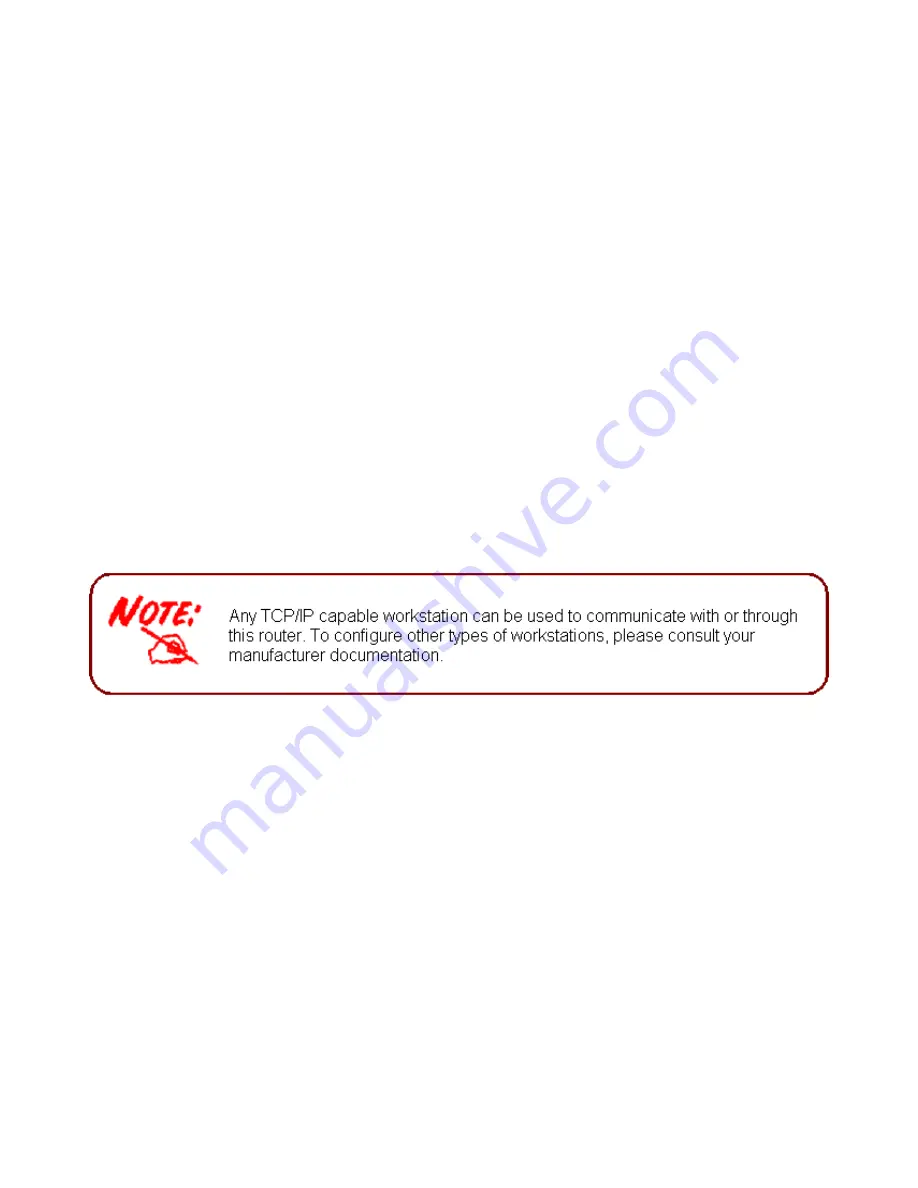
Chapter 3: Basic Installation
The router can be configured through your w
eb browser. A web browser is included as a standard
application in the following operating systems: Linux, Mac OS, Windows
98/NT/2000/XP/Me/
Vista/7, etc. The product provides a
n
easy and user-friendly interface for configuration.
P
lease check your PC network components. The TCP/IP protocol stack and Ethernet network
adapter must be installed. If not, please refer to your Windows-related or other operating system
manuals.
There are ways to connect the router, either through an external repeater hub or connect directly
to your PCs. However, make sure that your PCs have an Ethernet interface installed properly
prior to connecting the router device. You ought to
configure
your PCs to obtain an IP address
through a DHCP server or a fixed IP address that must be in the same subnet as the router. The
default IP address of the router is 192.168.1.254 and the subnet mask is 255.255.255.0 (i.e. any
attached PC must be in the same subnet, and have an IP address in the range of 192.168.1.1
to 192.168.1.253). The best and easiest way is to configure the PC to get an IP address
automatically from the router using DHCP. If you encounter any problem accessing the router web
interface it is advisable to uninstall your firewall program on your PCs, as they can cause problems
accessing the IP address of the router. Users should make their own decisions on what is best to
protect their network.
Please follow the following steps
to configure your PC network environment.
11
Summary of Contents for BiPAC 8200N
Page 15: ...12 Applications of the device Deployment scenario for VDSL using FTTx...
Page 68: ...65...
Page 69: ...66...
Page 73: ...70 4 Enter the AP SSID then click Next 5 Enter the passphrase then click Next...
Page 98: ...Src IP Source IP Src Port Source Port Dst Port Destination Port Dst IP Destination IP 95...















































